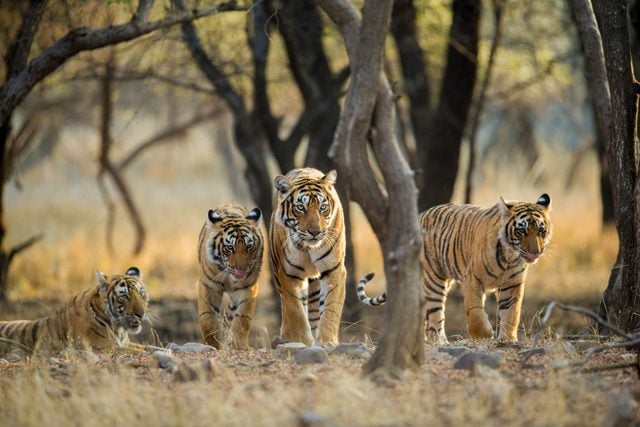
Disappearing animals
Since we don’t see a lot of these animals in our everyday lives, we don’t realize that they’re in danger. Educate yourself on these animal populations and try to do what you can to help.
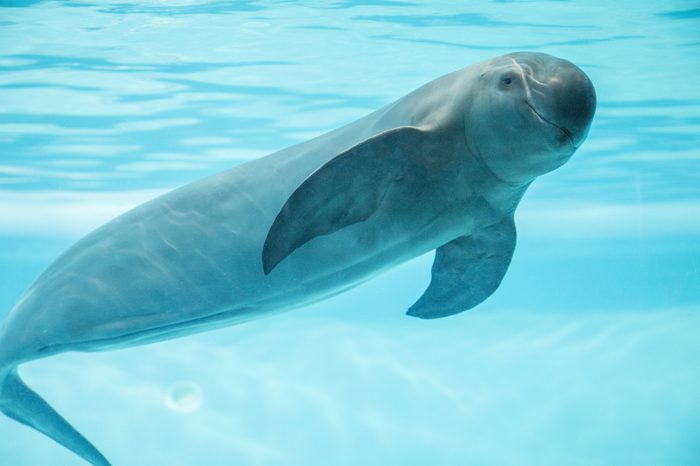
Vaquita
This small porpoise is found only in the northern Gulf of California, and one reason you may have never heard of the vaquita is that it is the rarest marine animal in the world; only 10 of them remain. With such a low population, this species could easily become extinct in your lifetime. These animals often get stuck and die in fishing nets as a result of illegal or poor fishing techniques. A large part of the conservation effort is to quickly improve harmful fishing techniques. Conserving wildlife matters as proven by these 8 animals that changed history.
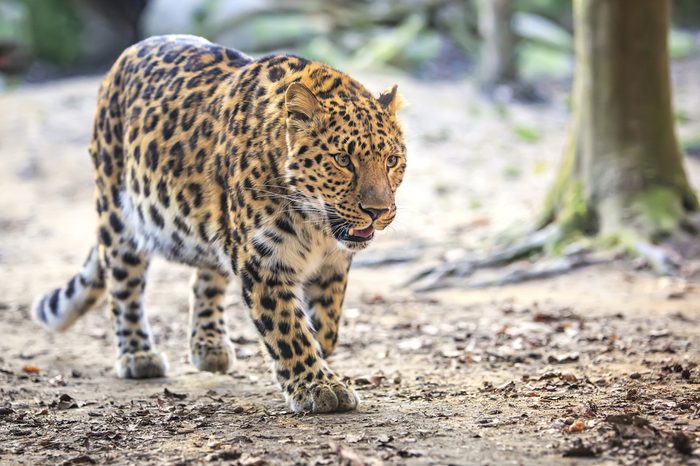
Amur leopard
Also known as the Far Eastern leopard, this Russian cat is dangerously close to extinction—about 20-40 remain. Like many beautiful wild cats, the Amur Leopard is being poached for commercial reasons. Poachers are also taking the Amur’s prey, severely limiting their food supply and contributing to the dwindling numbers. This is why the Amur leopard takes the title as the rarest wild cat on Earth. This is how coronavirus is affecting the world’s endangered species.
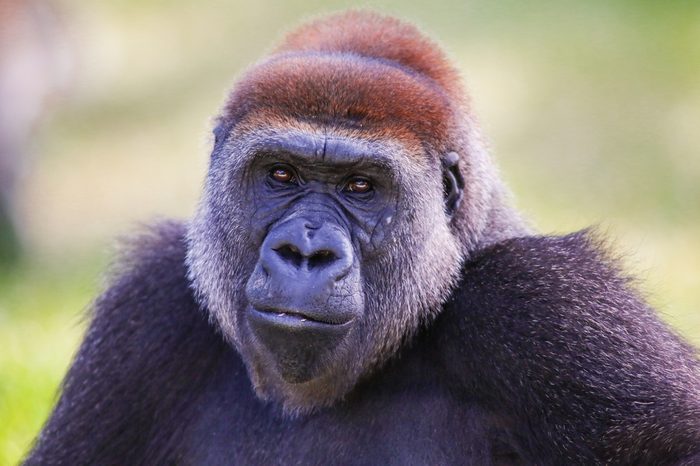
Cross River gorilla
Found in the Congo Basin, the Cross River gorilla population is somewhere between 200 and 300 because of deforestation and hunting. Cameroon and Nigeria are heading up the conservation effort by working with the WWF to protect the gorillas. A primary goal is to establish smarter practices in the timber industry. You can also help live more harmoniously with the wildlife around you by keeping in mind these 23 “facts” about animals you have all wrong.
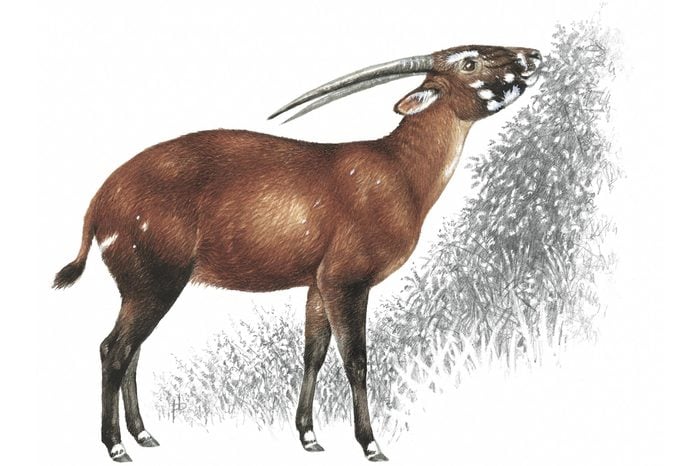
Saola
If you’ve never heard of the saola—the Asian Unicorn—it could be because the species was only discovered 26 years ago. The only known population of saola lives in the Annamite Mountains of Vietnam, but they are rarely ever sighted and the exact number of them is unknown. However, conservationists do know that—again—deforestation and hunting have made the species critically endangered, with estimates putting the population in the hundreds, and possibly as low as a few dozen.
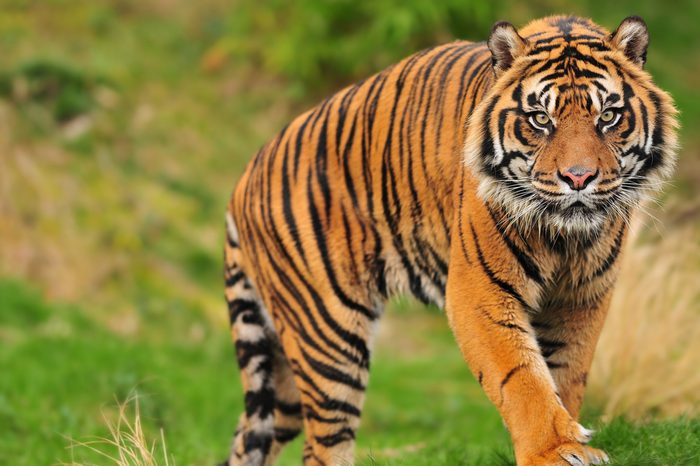
Sumatran tiger
The large Indonesian island of Sumatra has quite a few endangered species in their midst, one of which is the Sumatran tiger. The WWF reports that there are fewer than 400 Sumatran tigers left as hunting and deforestation increases; poaching alone accounts for 78 percent of tiger deaths. Local law enforcement and WWF patrols monitor the tigers and do what they can to protect them and their lands. You can help out by adopting a Sumatran tiger today! You may also be surprised to learn about these animals you never realized were endangered.
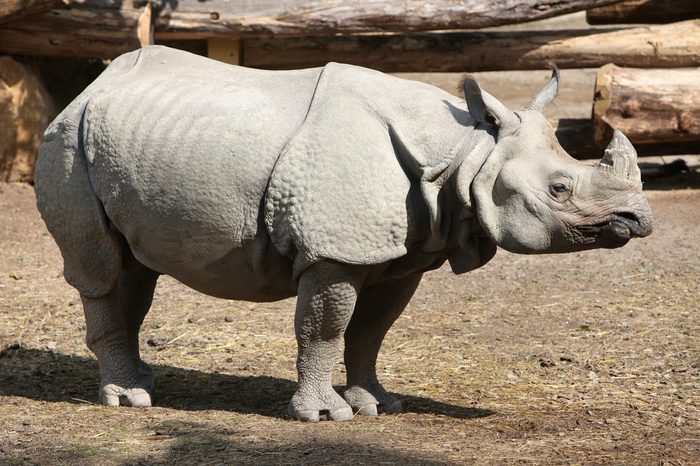
Javan rhino
This gray rhino found in Indonesia is teetering dangerously on the brink of extinction. There are fewer than 70 left in the world. As of right now, they can only be found in Ujung Kulon National Park in Indonesia; their habitat once spread from Southeast Asia to India. There are a number of reasons the Javan rhino are in such a critical state, from habitat destruction to disease. Because they are limited to one small location, the population is particularly susceptible to disease or a natural disaster (think volcano). This is why conservationists are working to establish another protected area to ensure the species’ survival.
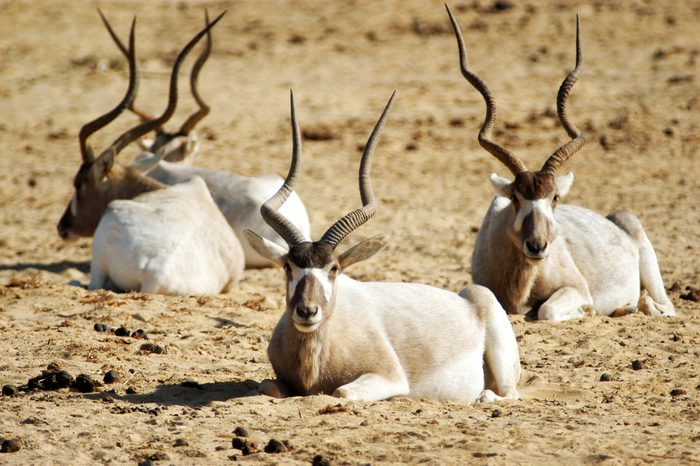
Addax
The International Union for Conservation of Nature (IUCN) has placed the addax on its red list because there are fewer than 100 left in the world. Also known as the white antelope, the remaining addax population lives in a region of Niger, and it’s critically endangered as a result of poaching and oil exploration.
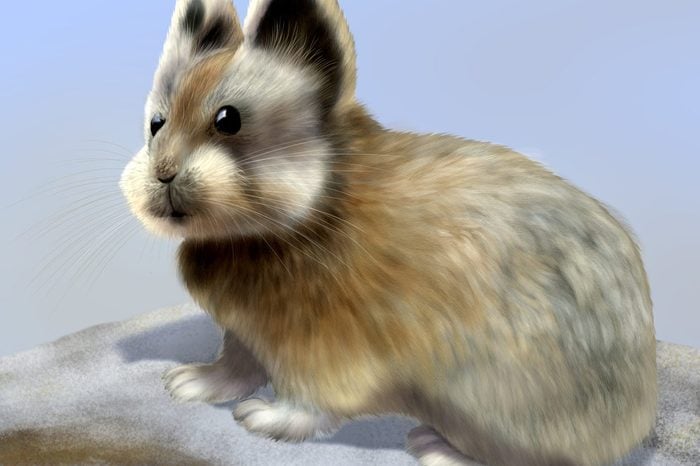
Ili Pika
The Ili pika is the cutest animal you’ve never heard of. Also known as the “magic rabbit,” the animal was first discovered in 1983 by conservationist Li Weidong, who has been following and studying these creatures ever since. Fewer than 1,000 Ili pikas remain—a 70 percent decrease in population since the animal’s discovery. Experts worry that this inhabitant of the Tianshan Mountains of China is facing grazing pressure from other animals and that, along with warming temperatures, is driving them further up the mountains and limiting food supply. If you can’t get enough of the Ili pika, you’ll love these photos of more adorable animals you never knew existed.
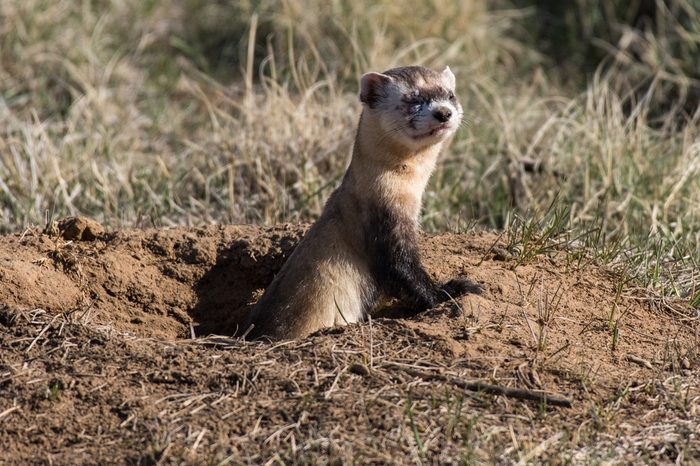
Black-footed ferret
Habitat loss and disease have reduced the black-footed ferret population to fewer than 300 individuals. This animal inhabits the northern Great Plains of the United States, but their home is shrinking. That is why conservationists are trying to reintroduce the ferrets to areas where prairie dogs are more abundant, as prairie dogs make up the majority of their food supply. These ferrets are as hard to spot as these nocturnal animals rarely seen by human eyes.
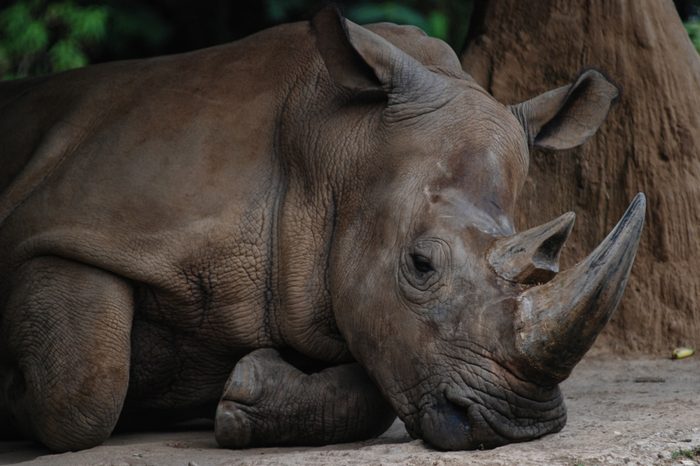
Sumatran rhino
Like the Javan rhino, the Sumatran is also in a dangerous position, numbering fewer than 80. This subspecies is the smallest living rhino and they are constantly threatened by the illegal rhino horn trade in addition to deforestation. The animal’s reproduction rate is extremely low; just two females have reproduced in the last 15 years. If you’d like to help the conservation effort, adopt a Sumatran rhino.
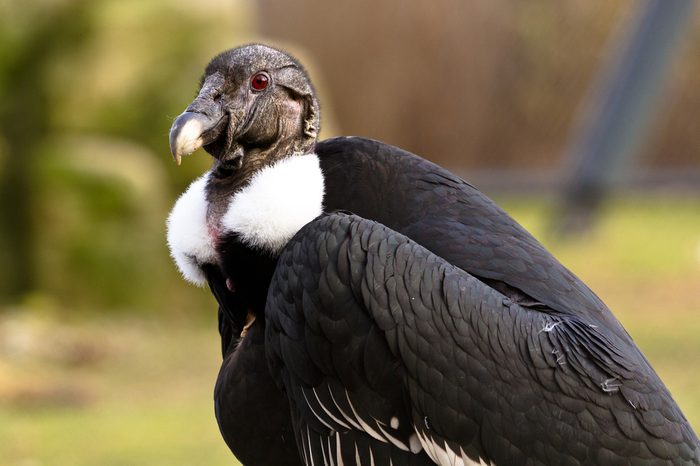
White-rumped Vulture
The veterinary drug called diclofenac is responsible for the fact that fewer than 1,000 white-rumped vultures now exist in Bangladesh. The drug is used on livestock and is lethal to the vultures who feed off of them. Conservationists have set up vulture safe zones in an attempt to regrow the population.
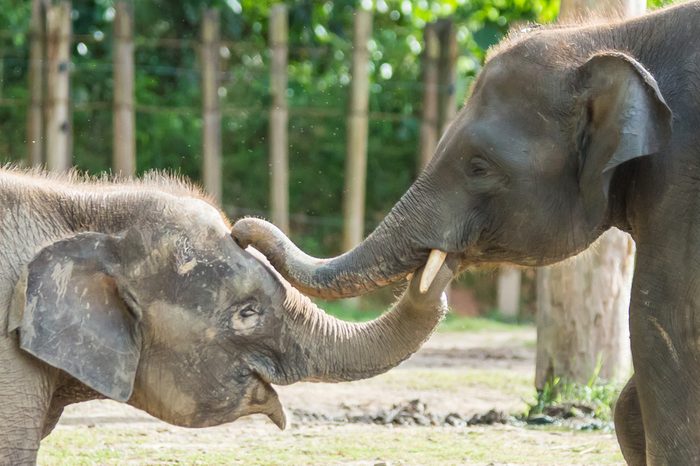
Borneo pygmy elephant
The Borneo pygmy elephant is the smallest elephant in Asia. While every elephant population in the world is threatened by ivory hunting, this species has been hit particularly hard and only 1,500 remain. Humans are also encroaching upon their territory and destroying their habitats for timber. Hopefully, a Chinese ban on ivory will help revive the Borneo pygmy elephants.
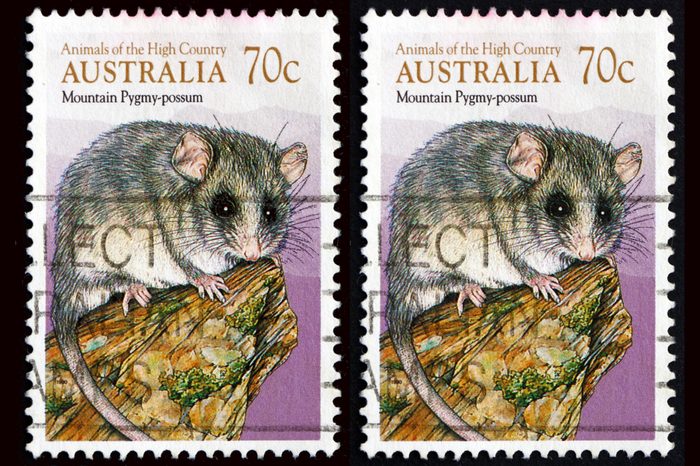
Mountain pygmy possum
This is not the first time the Australian possum has been on the endangered list. The animal was thought to be extinct when a fossil was discovered back in 1896. The Guinness Book of Records named the mountain pygmy possum the rarest animal in the world in 1967, when a live one was spotted for the first time. Now we know that there are at most 2,000. Still, that is a critically low number—and potentially dropping as a result of ski resorts being built in their habitat. Captive breeding efforts are underway to replenish this diminishing species.
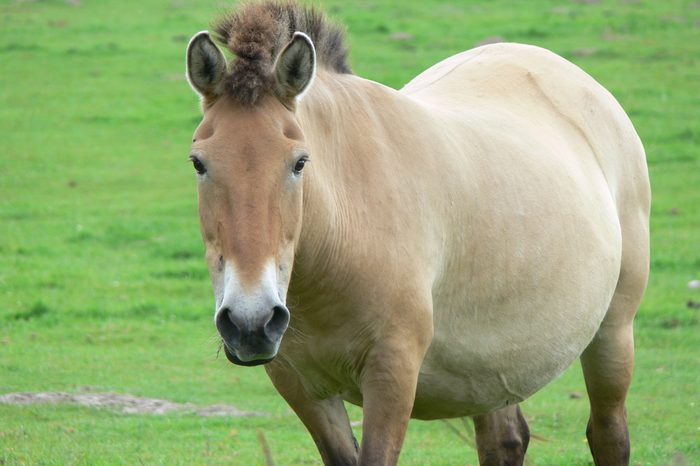
Przewalski’s horse
This subspecies is another animal that needs help from captive breeding programs. Przewalski’s horse (named after a Russian explorer, it’s also known as the Asian or Mongolian wild horse) has been interbred with domestic horses so much that there are only 2,000 of the originals left. They are the only species of wild horse in the world; hunting and interbreeding are nudging them toward extinction. Fewer than 300 still roam in the wild, while the rest are being monitored in captivity. Wildlife matters –– check out these 12 truly genius animals.
